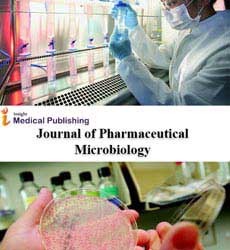Abstract
New insights into antimicrobial peptides isolated from Brazilian natural sources
The increasing rate of antimicrobial resistance and the diversity of resistant bacteria are two of the main explanations for research into the
production of new antimicrobial drugs. Antimicrobial peptides (AMPs) represent an interesting alternative to commercial antibiotics due to
factors such as their low toxicity to eukaryotic cells and specificity for microbial cell membranes. These factors are related to microbial membrane
features and physical chemistry properties of the peptide, hinders the development of evasion mechanisms by the microorganism. Thus, our field
of study on Butantan Institute is to identify AMPs from different natural sources, including chicken eggs, pineapple, garlic and invertebrates, such as
kissing bugs, spiders, centipedes and scorpions among others. A wide broad of molecules have been isolated and had their antimicrobial potential
confirmed. Serrulin from the scorpion Tityus serrulatus, Lacrain from the centipede Scolopendra viridicornis, Sarconesin from the fly Sarconesiopsis
magellanica and Juruin from the spider Avicularia juruensis are some of the examples. Interestingly, during these studies we were able to identify
different sources of AMPs. Some can be a result of intrinsic protein cleavage on the animal hemolymph, as Rondonin from Acanthoscurria
rondoniae, others can be constitutively produced as part of the organism’s defense, such as Tachykinin-related peptides 1 and 2 from Triatoma
infestans and others can have their origin from food ingestion, might suffer degradation, be absorbed and still be active inside the insect, on the
digestive tract or hemolymph, which are the case of two other recent works involving T. infestans, where it was proven that human Fibrinopeptide
A with antimicrobial activity can be isolated from this insect’s hemolymph, and that the cleavage of the hemoglobin ingested forms several
antimicrobial peptides. Therefore, these molecules have relevant therapeutic potential representing an ideal alternative to the available antibiotics.
Author(s):
Laura Cristina Lima Diniz and Pedro Ismael da Silva Junior
Abstract | PDF
Share this

Google scholar citation report
Citations : 36
Journal of Pharmaceutical Microbiology received 36 citations as per google scholar report
Abstracted/Indexed in
- Google Scholar
- Secret Search Engine Labs
Open Access Journals
- Aquaculture & Veterinary Science
- Chemistry & Chemical Sciences
- Clinical Sciences
- Engineering
- General Science
- Genetics & Molecular Biology
- Health Care & Nursing
- Immunology & Microbiology
- Materials Science
- Mathematics & Physics
- Medical Sciences
- Neurology & Psychiatry
- Oncology & Cancer Science
- Pharmaceutical Sciences

